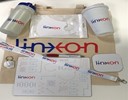Project highlights
We are encouraging healthier and more sustainable practices on our sites. An example is the use of Sugarcane Water Bottles at the UK-based Shurton project. Across the construction industry, addressing the single-use plastic water bottles on-site has the potential to significantly reduce the waste generated by our workforce.
It is commonly known that by reducing or eliminating the generation of harmful and persistent wastes, waste minimisation supports efforts to promote a more sustainable society. The focus on waste management is extremely high also in the construction industry.
There are many options to reduce waste to a bare minimum. In the construction business, waste can be broken down into key categories – wood, metal, spoil, hazardous waste, and general waste – which includes plastic, glass, and cardboard, and all of these materials are segregated were viable and recycled in these categories.
One of the biggest opportunities in reducing waste is to improve concrete replacement materials within the construction of the substation foundations. Other cohesive materials encountered will undergo testing to assess their suitability as general fill material, utilised as backfill for excavations as required.
Linxon utilise the following key controls on our sites to reduce waste and implement circular economy principles:
Design out waste – we have educated our engineers in circular economy principles and designing out waste where possible. Examples include using a screw pile solution which would totally remove all concrete use and associated aggregates with concrete thus reducing waste and carbon on-site and creating soil bunds (with the client and council’s permission). On the Rampion Offshore Wind Farm 33/150/400kV Onshore Grid Connection Substation site, we retained approximately 15,000m3 of spoil on site.
Transport and delivery waste – Linxon minimise damage or losses in delivery to site, unloading, or placing into storage. For example, Linxon specifies that all transformers are transported with shock recorders as standard.
Site storage and internal site transit – Linxon ensures materials are stored and transported around the site correctly to minimise any damage and so reduce waste. Attention is given to the correct stacking and storage to minimise material damage and so reduce unnecessary waste, for instance, anything that needs to be kept in dry conditions (e.g., cement and plaster). In addition, consideration is also given to how materials are transported around the site to minimise any damage during loading, movement, or unloading.
Cutting/conversion waste – Attention is given to reducing losses through the cutting out of uneconomical shapes e.g., timber. This includes educating engineers on the size of the material to reduce cutting waste.
Excess materials at the workplace – We ensure our engineers specify correct quantities to minimise any over-ordering and so generate unnecessary waste.
Application and residue waste – Some materials are more prone to spillage, e.g., plaster and paint are often left in cans which may not be resealed. Attention is given on-site to minimise this issue.
Criminal waste – Linxon minimise the potential of theft from the site due to vandalism through fencing solutions and the provision of security guards.
Waste due to wrong use – Linxon ensure we don’t use the wrong type or quality of materials to minimise waste.
Waste stemming from materials wrongly specified – We ensure bills of quantities are correct.
Waste due to uneconomic use of plant – Our policy is to ensure the plant is not left running when not in use and we ensure optimal plant use on site.
Management waste – Material control is used to minimise double handling and optimise material storage to minimise wastage. Surplus materials, e.g., earthing/multicores, etc., are reused on the next project (where applicable) or recycled (where appropriate). In addition, all items are hired with options to ‘buy back’ to reduce waste resources. By incorporating this process, we are able to extend the life of the materials we use by continuing the lifecycle of the materials circulating within the economy.
Negligent waste – We prevent overproduction of material, e.g., over-digging for foundations, to minimise waste generation.

Sustainable practices for everyone – a small but efficient example from UK
We are encouraging healthier and more sustainable practices on our sites. An example is the use of Sugarcane Water Bottles at the UK-based Shurton project. Across the construction industry, addressing the single-use plastic water bottles on-site has the potential to significantly reduce the waste generated by our workforce. We have made refilling points more prominent within the welfare facilities to ensure these re-usable bottles are easy to use and to generate health and sustainability benefits.
 In addition to the above, we are also using sustainable, locally manufactured recycled materials for our UK welcome packs for new employees and have recently distributed 100% recycled reusable water bottles and thermal tumblers to all our UK projects to reduce our single-use plastics and to promote well-being.
In addition to the above, we are also using sustainable, locally manufactured recycled materials for our UK welcome packs for new employees and have recently distributed 100% recycled reusable water bottles and thermal tumblers to all our UK projects to reduce our single-use plastics and to promote well-being.